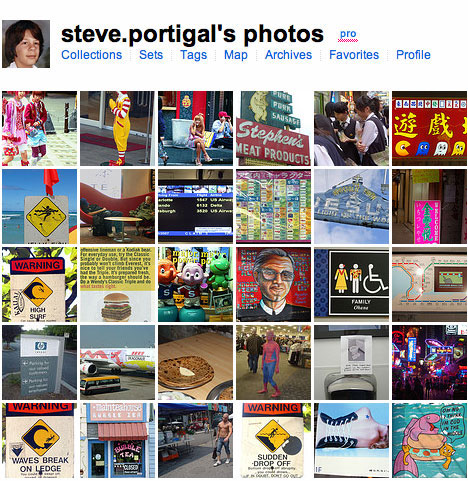








To be a better design researcher, hone your ability to observe the world around you. Keep a regular log that you add to at least weekly (daily would be ideal). Document the strange, the curious, the weird, the awesome and the funny. Learn to keep a close eye on the artifacts, signs, designs, behaviors, products and experiences that you encounter in your everyday life.
Put your observations on the Internet. Maybe no one will see them, but the discipline of taking your observations out of your own head and publishing them in a sharable form will force you into telling a story. As much as design research is about observing others, there's something very personal about how and what we see, and developing that voice will serve you well. Collect stories and retell them in your own way, emphasizing the perspective you want others to take away.
As much as design research is about observing others, there's something very personal about how and what we see, and developing that voice will serve you well. Collect stories and retell them in your own way, emphasizing the perspective you want others to take away.
Your log doesn't need to be conclusive, you just need to be observant and tell people what you think, wonder, or imagine. Learn to hear yourself feeling "Hmm—that's interesting!" and then share the interesting thing, being sure to articulate what it is about it that's interesting. Don't worry about fixing it (if it needs fixing), just notice and tell a quick story in your own voice. Be funny, sarcastic, critical, or outraged as appropriate.
Set up a free account with a photo sharing site like flickr.com, or a blogging site like blogger.com (this stuff probably doesn't go into your MySpace or Facebook account). If you're visual and like to take pictures, then start with flickr for sure. Be sure to include a description of what you've taken a picture of and why you think it's interesting. If you like to write, start with blogger, telling your stories in prose (but throw in a picture once in a while). Aim for 200 words in each post.
Remember that these are sketches. To get better at this, see them as disposable rather than precious, and commit to posting something regularly. Ultimately, this should be fun, not a chore, and just think of the material you'll be able to mine when the need arises.
For examples check out www.janchipchase.com and www.flickr.com/photos/steveportigal.
Steve Portigal is the founder of Portigal Consulting, a leading consultancy that advises market-leading brands on all their customer-facing strategies. He has taught design research to students at CCA and at many conferences.